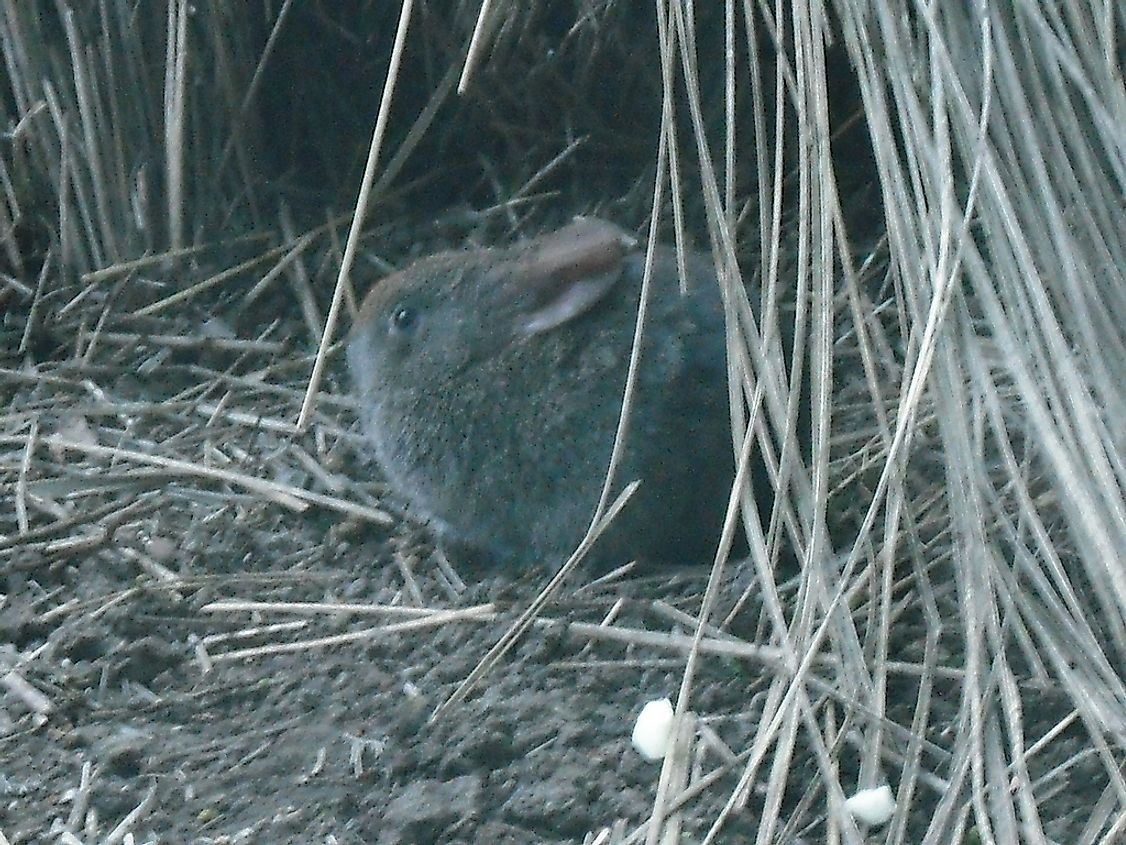Volcano Rabbit Facts: Animals of North America

5. Physical Description
The volcano rabbit (scientific name Romerolagus diazi) is more commonly called zacatuche or teporingo by the locals living in the mountainous regions of Mexico where these tiny animals are found. Easily identified by their minute appendages (ears, legs, feet, tail) and thick stubby fur, volcano rabbits are rather small mammals with, adult individuals weighing only 1.3 lbs, making them the second smallest rabbit in the world, following only the pygmy rabbit. These animals are equipped with two upper incisors designed specifically for gnawing, a body feature which sets them apart from rodents.
4. Diet
Volcano rabbits are primarily herbivores, meaning to say they feed mostly on plants, especially grasses, that abound within their natural habitats. Examples of their grassy food sources are the leaves and twigs of such plants as Eryngium rosei, Muhlenbergia macroura, and Stipa ichu. Those kept in captivity are typically fed with corn, apples, and oats, while those found living in forests are able to survive on tree bark, herbs, and other greenery. Volcano rabbits prefer to forage for food during dusk or dawn, although some individuals, especially those belonging to the same burrows, have been observed to be active during the daytime as well.
3. Habitat and Range
Volcanic rabbits are only found on the rainy mountainous areas of Mexico. Specifically, these are the wet inclines of Tlaloc, Popocatepetl, El Pelado and Iztaccihuatl, to where they are considered endemic. Hunting and selling of these endangered mammals is prohibited, although the Mexican government is facing substantial challenges in implementing these restrictions. Large scale destruction of their natural habitats, such as by logging and burning of the forests to make way for agriculture, has greatly decreased the population of the volcano rabbits, although many conservation parks like the Zoquipan National Park have made significant progress in breeding their colonies. As of yet, no proposal has been set forth by the Mexican government to introduce captive colonies of the Volcano rabbit into the wild. Their populations are affected by climate change as well, and they are classified as an "Endangered' species by the International Union for the Conservation of Nature's (IUCN's) Red List of Threatened Species.
2. Behavior
Volcanic rabbits are known to be crepuscular, which is to say that they are primarily out and about only during the dim conditions of the late afternoons and early mornings. They shed their thick furry coats only once every twelve months, and live in colonies with 2 to 4 other individuals in nests located underground. Being small and lacking sturdy appendages which can be used to defend themselves from larger predators, these animals compensate by being fast on their feet, and will often dart to higher sections of their habitats when they feel threatened. The dark colorations of their fur also helps them blend in with their surroundings, making them a bit of a challenge to hunt.
1. Reproduction
Volcano rabbits reproduce birth their issues within confined surroundings, that is why they need to be kept in spacious nests when raised in captivity. These animals are able to reproduce more than once a year, although they have been found to breed more effectively during the months of March, April, May, and June. Their gestational period is very short, just about 40 days, culminating in the birth of one to three young ones per litter. Those bred in captivity have been found to reach maturity after a month or so. Those in the wild are weaned and able to find their own food after three weeks of remaining in their mothers' nests.











